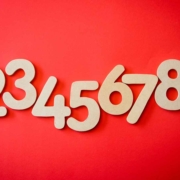The Hidden Connection: Lead Time And Inventory Optimization Explained
What is Lead Time? Why Is it Important?
Lead Time is the length of days between when an order is placed and the date the goods are available for use. The largest impact to lead time accuracy is found by comparing the expected receipt date to the actual receipt date for each purchase order. In simple terms, the variance is calculated as the absolute value of the difference [expected or requested receipt date – actual receipt date] for each line on the purchase order. These variances in days across multiple purchase orders establish the need for lead time accuracy testing and lead time forecasting.
What is the Impact When Supplier Lead Time is Not Accurate?
Suppliers provide an estimate of lead time, but these numbers are not always accurate. The differences between your expected receipt date and the actual receipt date can lead to significant costs. This is due to unplanned overstocks, out-of-stock situations, and deflated consumer opinions. Furthermore, Lead Time tracking, and Lead Time forecasting are mission-critical to the success of your supply chain.
Math Algorithms are the Key
Lead Time Forecasting, like Demand Forecasting, should use a set of math algorithms to calculate the correct lead time days to use in planning purchase orders. Also, like Demand Forecasting, the Lead Time Forecast should move up and down according to changes in the market, business influences, and seasonality of the product.
The ability of Lead Time forecast to be accurate and dynamically updated decreases the safety stock needed in your inventory. The resulting lead time forecast is then multiplied by the daily demand forecast for each day moving forward. This determines how many units will need to be carried on the shelves to maintain service level in between orders.
Do Lead Time Forecasting Variances Impact Inventory Optimization?
Lead time forecasting accuracy heavily influences your inventory optimization success. This is impacted by both safety stock and consumer opinion of your customer service capability. When to place the inventory replenishment order or when to place the new product order should be based in part on lead time days.
Some companies use a single lead time forecast number for all vendors. However, the reality is that all vendors and products are not the same. First, review how many products have a bad lead time that is too short. This means you run out and have lost sales. Second, calculate your lost sales for those out-of-stock days (you do have a method to calculate lost sales, right?) and sum the total lost sales across six months to see how much money you are losing. Now, look at all those skulocs that had overstock where the actual lead time was less than the expected lead time across the last six months. Next, Sum the cost of the excess inventory and, multiply the result by 10%, and then you have a conservative estimate of your overstock carrying cost. In reality, your actual costs are probably double that number. Finally, add the overstock cost and the lost sales cost together to see a six-month total.
Poor Lead Times Lead to Lost Profits
How much profit did you lose this past year due to poor lead time forecasting?
Join our Blog, share your thoughts today: How does Lead Time impact your inventory, is it optimized for profit?
For more information on how Data Profits can ‘Tighten the Links in your Chain™’ click here.
Copyright © Data Profits, Inc. 2013 All Rights Reserved.
- Demand Forecasting: The Ultimate Secret for Your Organization’s Success - August 7, 2024
- How to Avoid Carrying Cost Mistakes in Inventory Optimization - June 10, 2024
- 3 Common Forecasting Software Issues and How to Fix - May 20, 2024











